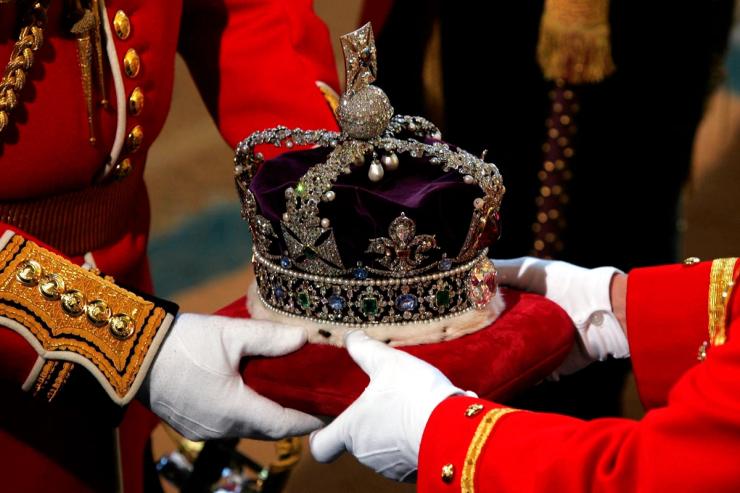The News
At King Charles III’s coronation on Saturday, he is expected to follow tradition and wear the Imperial State Crown at the end of the coronation ceremony, and return to Buckingham Palace wearing it.
The crown has about 2,900 diamonds and other stones and is a symbol of the British monarch — Queen Elizabeth II wore it on several occasions, for example. But it’s also been a source of controversy in recent days, as some of the larger stones on the crown are originally from other countries.
Here’s what you need to know about where the jewels in the Imperial State Crown are from.
In this article:
Know More
Cullinan II
The Cullinan Diamond, also known as the Star of Africa, was originally mined near Pretoria in South Africa. A 3,100-carat stone, it’s considered the world’s largest diamond.
A smaller diamond cut from the stone, called the Cullinan II, appears on the coronation crown. A larger cut of the stone is set in the royal scepter that Charles will hold during the ceremony.
The stone was given to the British monarchy in the early 1900s by the colonial government in South Africa, which was under British rule.
Now, some South Africans are calling for Britain to return the stone.
“The diamond needs to come to South Africa. It needs to be a sign of our pride, our heritage, and our culture,” lawyer and activist Mothusi Kamanga told Reuters. He has promoted a petition calling for the jewel’s return.
Stuart Sapphire
A 104-carat blue sapphire, this gem is believed to have originated in Asia. The history of how it came into British possession is unclear, but it is known for being among the jewels that James II smuggled from England to France after the Glorious Revolution of 1688.
It was later returned to England and was part of the crown during Queen Victoria’s coronation.
Black Prince’s Ruby
This large spinel is of “Eastern origin,” according to The Royal Collection Trust.
It has been in England’s possession since the 1360s. Don Pedro, the king of Castile in present-day Spain, gave the jewel to England’s Prince Edward — also known as the Black Prince — after a battle.
Don Pedro is believed to have taken the stone from Abū Sa’īd, the Arab Muslim ruler of Granada.
The View From South Asia
Camilla, the Queen Consort, will wear a crown that has been modified to remove the 105-carat Koh-i-Noor diamond, one of the largest cut diamonds in the world.
Over the last several centuries, the jewel changed hands between various empires in south and west Asia, including Mughal emperors and Persian leaders. In 1849, it was given to Queen Victoria by the deputy chairman of the East India Company, which had just annexed India’s Punjab region.
It was first worn by Queen Victoria, and has since been used in crowns worn by female members of the royal family.
India, Pakistan, and Afghanistan have all made ownership claims over the diamond over the years, and have called for Britain to return it.


